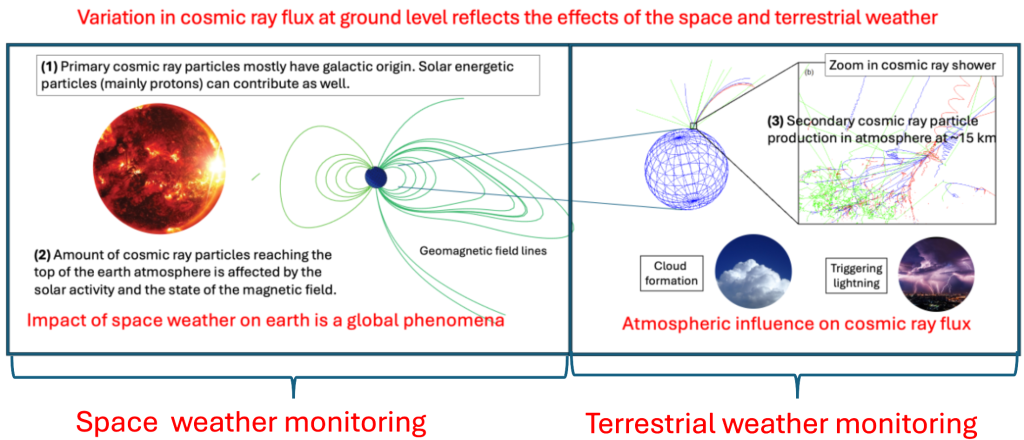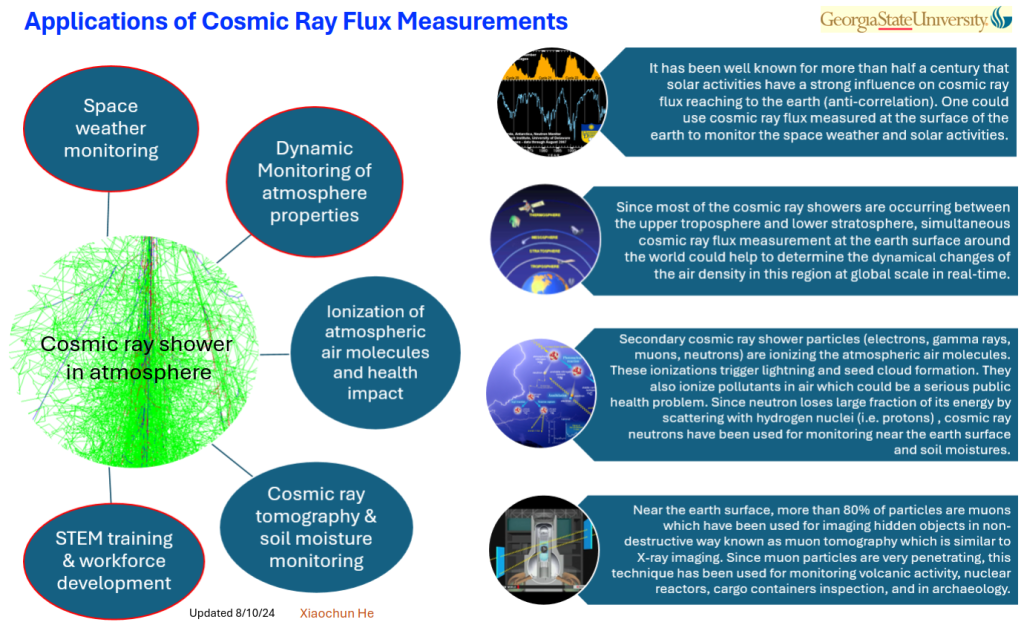Space weather, broadly defined as the field studying interactions of solar global and transient activity with the geospace environment, remains of increasing importance for the community and a recognized national priority. Extreme space weather events affect technological infrastructures both in space and on Earth. Solar transient activity such as individual solar flares, solar energetic particle events, and geomagnetic storms
can disrupt communication systems, damage satellites, cause power grid failures, and increase radiation exposure, particularly for astronauts and high-altitude flights. It can also interfere with GPS signals, affecting navigation and critical timing systems. These disruptions underscore the importance of monitoring space weather worldwide to protect our technology and infrastructure now and in the future. It is important to emphasize that monitoring and forecasting space weather, particularly transient events that have a direct imprint on the cosmic ray measurements (like interplanetary coronal mass ejections (ICMEs) and geomagnetic storms) come with significant uncertainties due to several limitations in the observational and modeling capabilities.
Our solution is to implement a global (Earth-scale) and cost-effective network of cosmic ray muon detectors, gLOWCOST, for monitoring the space weather with a broader ground coverage that compliments the limitations of the current space weather monitoring networks. With the existing network of space-based
observatories and ground-based instruments, there are still major gaps in global coverage and awareness, especially in remote or economically challenged regions. These gaps can lead to incomplete data that can affect the accuracy of space weather monitoring and predictions. At the same time, many space weather monitoring instruments and satellites became operational years or even decades ago. As these technologies age, they may become less reliable, and the cost and complexity of maintaining or replacing them can be significant.
There have been prior efforts for achieving global scale measurements for
cosmic ray flux. However, the dynamics of cosmic flux variation on a global scale are very challenging to track as they are influenced by solar activity, geomagnetic fields, and dynamic changes in the Earth’s atmosphere. To this end, prior works have faced significant impediments in achieving the goal due to various practical reasons such as high cost, difficulty in replicating, and different detection acceptance and efficiency
or detection acceptances that are too small (i.e. large statistical errors). In addition, acquiring data at a global scale in real-time, in synchrony, and at high precision is very challenging to engineer in reality. We plan to bridge this gap through the gLOWCOST system.
The working principle of using the measurement of the cosmic ray flux changes at a global scale for studying the space weather and the atmospheric tomography is highlighted below:

There are a number of interesting applications of cosmic ray measurements that the team at GSU are working on. A list of five general categories is the following:
